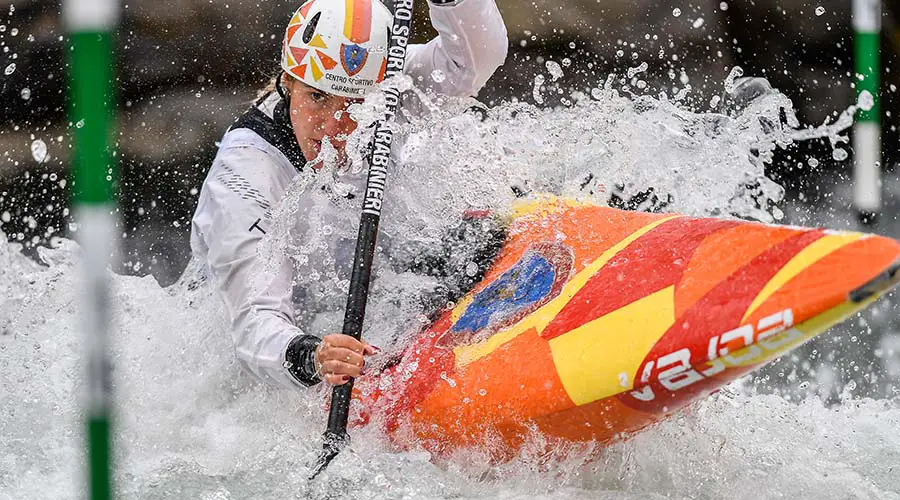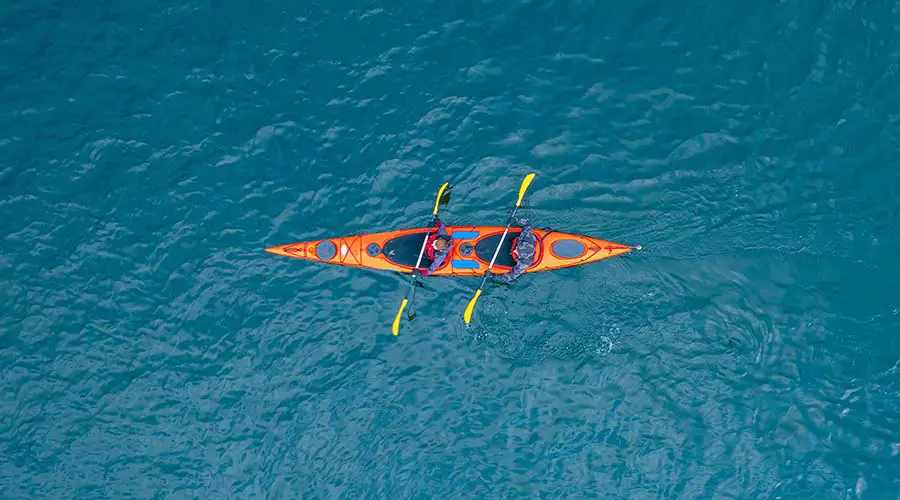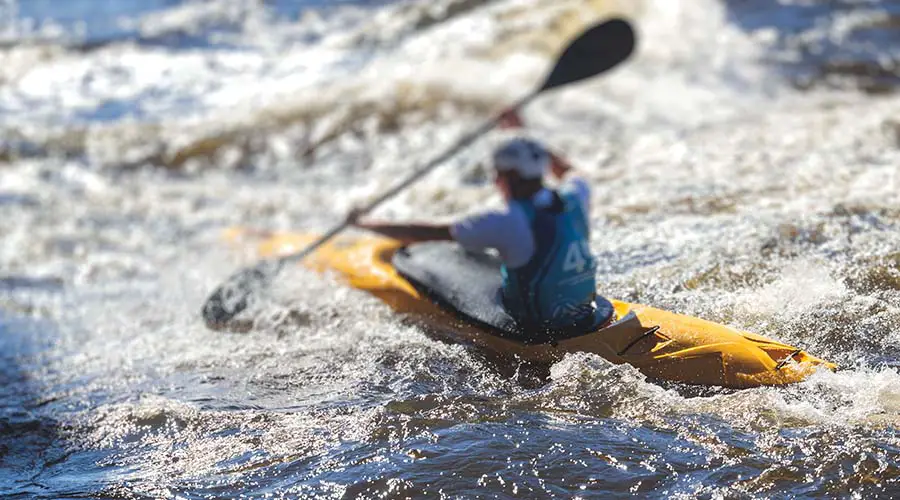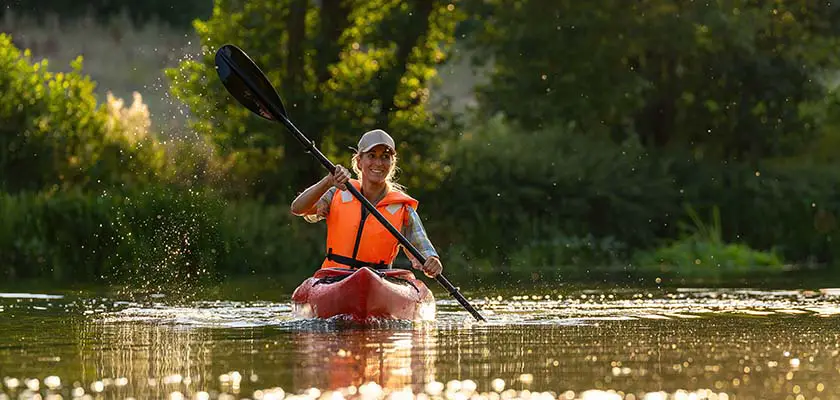Canoeing is a sport that is gradually winning the hearts of the whole world and gaining more fans. Included in the Olympic Games, the sport attracts attention because it requires agility, strength and a lot of concentration from its athletes.
To keep you up to date with everything involved in this sport, we’ve prepared an unmissable article with the main rules of canoeing. We’ve also brought you other details you need to know before watching or, perhaps, practicing!
Before getting to know how canoeing works and each rule, let’s learn a little about the history of the sport, its modalities, classes, distances and much more!
Check it out 👇
Canoeing: a brief history

The history of canoeing is not very different from other sports, since transportation by canoe has always been used by humans, ever since our ancestors. The canoe had and still has fans who needed to navigate seas and rivers not only as a means of transportation, but also for fishing and other explorations.
There are records of representations of canoes dating back to 700 years BC in Guatemala, and they were made from tree trunks, animal skins and other materials. In addition to Central America, the first canoes were used by Eskimos in Greenland.
But it wasn’t until 1886 that John MacGregor, a British writer and explorer, turned ordinary canoeing activities into a sport. He founded the Royal Canoe Club, the world’s first canoe club, which is still active today.
Canoeing as a sport arrived in Brazil at the beginning of the 20th century by European immigrants, but the sport only began to be competed in the 1930s. Before it spread, the first competitions took place on the beaches of Rio de Janeiro.
In 1983, the Brazilian Canoeing Confederation (CBCa) was created to promote and develop the sport throughout the country. Nowadays, the sport is only growing and is still very promising for athletes.
Let’s find out what the rules of canoeing are.
Canoeing rules: modalities

There are different types of canoeing, such as freestyle, ocean, polo, marathons, speed, downhill and slalom. Let’s find out a bit about the rules of each type of canoeing, shall we?
Ocean canoeing
Ocean canoeing is practiced on the high seas, as its name suggests, but it can also take place on large lakes or rivers. The sport is one of the most challenging, as the athlete has to face the weather conditions of nature.
Polo canoeing
In polo canoeing, athletes compete in teams of five each. The aim is to use the paddles on the kayaks to make passes and score goals.
Freestyle canoeing
In freestyle canoeing, the athletes will be judged on their maneuvers in turbulent waters. In the midst of waves and other movements, the competitor stands out by showing all their skill.
Downhill canoeing
The downhill canoeing competition is full of adventure, with athletes racing down rivers and streams to try and cross the finish line in the shortest time possible.
Speed canoeing
According to the rules of canoeing, the disciplines that are part of the Olympic Games are speed canoeing and slalom canoeing. Speed canoeing takes place in a straight line on calm waters.
The sport is competed in over different distances, from 200 meters to 1000 meters, and can be done individually or in pairs.
Slalom Canoeing
Slalom canoeing also takes place in turbulent waters, either individually or in pairs. Competitors race downstream, making turns around extremely difficult obstacles.
As the Olympic disciplines are speed and slalom, let’s take a closer look at the canoeing rules for each of them?
Speed canoeing rules
The rules of speed canoeing stipulate that competitions take place over distances of 200 meters, 500 meters or 1000 meters. The categories are also divided into men and women, and kayaks and canoes.
As with any race, the competitors are positioned behind their lanes, waiting for the start signal. When the referee authorizes the start, the players must use only their oars to gain momentum and speed.
Overtaking must be done carefully so as not to hinder the competitor’s progress. Any movement that harms the opponents is considered a penalty, along with other prohibited movements.
Canoeing penalties also include starting a race before the referee’s signal, leaving your lane during the course, not passing through the gates correctly or touching them.
There are different types of kayaks and canoes in speed canoeing, from those that only fit one person to those that fit four. Check them out:
K1, K2 and K4 kayaks
There are three speed kayaks. The K is an individual kayak, the K2 is a double kayak, for competitions with two people paddling, and the K4 is for teams, so that four people can paddle at the same time.
Respectively, the kayaks measure 5.2 meters in length and at least 12 kilos, 6.5 meters and 18 kilos, and 11 meters and 30 kilos.
C1, C2 and C4 canoes classes
Canoes are the same as kayaks: C1 for individuals, C2 for pairs and C4 for teams.
The measurements and weights, respectively, are 5.2 meters and 16 kilos, 6.5 meters and 20 kilos, and 11 meters and 50 kilos.

Slalom canoeing rules
Slalom canoeing takes place individually and in pairs, and the courses have between 18 and 25 marks. Each mark, or gate, is classified as green, upstream, and red, downstream.
According to canoeing rules, in the slalom discipline, individual canoes and kayaks are 3.5 meters long. Doubles are 4.1 meters long.
Canoeing rules: equipment
The rules of canoeing also involve the types of boat, which can be canoes or kayaks. The difference between them is that canoes are open and have a single-sided paddle, and kayaks are closed and need a double-sided paddle.
In addition to the boats and paddles, athletes need to wear helmets and life jackets, and in some cases special clothing to cope with the icy waters. Sneakers or boots are also essential for safety.
Completing the competitors’ equipment are the waterproof covers on the canoes or kayaks, which have the function of preventing water from entering.
Among the optional items in the sport are goggles, protecting the eyes from splashes and sunlight, and neoprene gloves, protecting the hands from constant paddling and icy waters. Protective lanyards on boats are also a good option for possible rescues.
What did you think of the rules of canoeing? Now that you know about the sport and how it is competed in, take the opportunity to continue browsing the site to find out more about other sports. Your comments are also very welcome!



